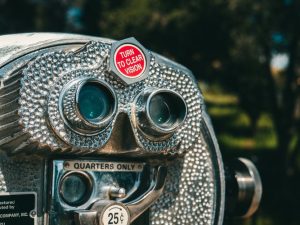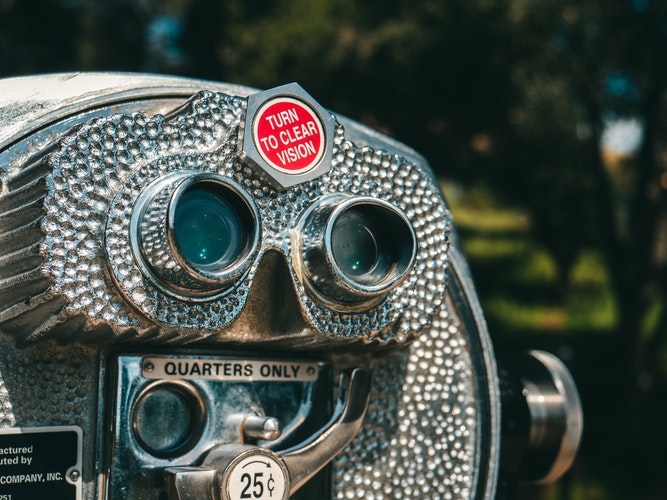Humans have been experimenting with glass since its inception. These scientific researches soon gained popularity for their optical implications.
The early binoculars were known as binocular telescopes. They are presumed to be Galileo’s discoveries and designs of prisms. However, the first real binocular telescope was devised by J. P. Lemiere who in 1825.
The old binoculars were made of brass housing covers. They were heavy in weight and quite expensive to produce. However, with time and changes in technology, came the invention of Modern-day binoculars.

The contemporary binoculars are mainly manufactured from aluminum coated with silicon or a leather-like material known as gutta-percha. The lenses and prisms are made from glass and have an anti-reflective coating for protection.
Binoculars are quite similar to telescopes, one for each eye that is assembled together. They are relatively made smaller to allow you to use them with hands, thus enhancing the mobility.
Have you ever wondered how these magical devices that make the world small are produced?
Here are some amazing insights explaining how binoculars are made.
- A suitable lens material is poured into a spherical curved bottomed lens mold.
- The lenses are removed from the molds and cut into specific pieces to create the optical lenses. They are then polished in a grinding machine.
- After a careful machining process, lenses are anodized to reduce reflections in vacuum tanks. The more the coatings on the lenses, the lesser will be the light absorbed.
- The optical lenses (closest to the eyes) are molded and polished by an auto-polish machine. They are then placed on a diamond turning machine and lastly cleaned by running through a variety of solvents.
- The objective lenses (farthest from the eyes), are also molded and then carefully polished.
- All these components are then manually assembled together in a die cast body that is mostly made from aluminum.
- Two lenses are assembled together as a double lens restricts distortion that leads to color fringes around the image produced.
- The physical vapor deposition is used to place in the oculars in a “plasma machine” and they are layered with dielectric coatings, ensuring high performance.
- These optical are tested for clarity and defects.
- Subsequently, the rod-shaped prisms are cut into three-sided shapes on the basis of the type of prism being produced, either roof prisms or porro prisms. Under a porro prism design, two prisms are stuck together to turn the image in the upward direction.
- All these components are put together on a belt assembly line. During the final assembly process, the prisms are placed precisely making the left side parallel to the right. As such, only one image will be seen at a time.
- The prisms are manually placed inside the binocular casing and are tightened firmly.
- To hold the objective lenses in place, a metal or plastic ring is fitted near the optics with a rubber eyecap.
- Lastly, the binoculars are packed in cases (canvas-like material) having neck straps.
And that’s how a binocular is put to shape!

